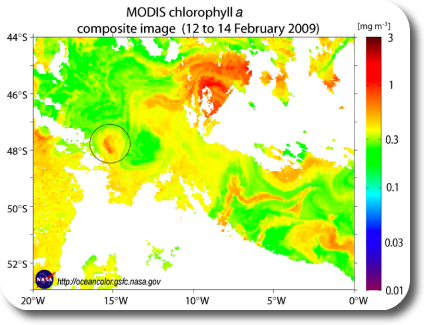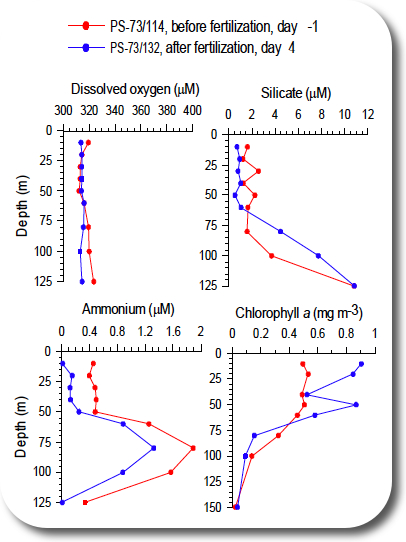Archive for the ‘Pollution’ tag
Jacob Bear Short Course – Day 3
I had an epiphany today. It has to do with dispersion. If you are at a scale, where you look at little pieces of solids which have either and / or air around them. Let’s call this microscopic scale. Say, you are trying to describe how a solute moves by advection on that scale, then you would do this by a term that represents the velocity of the fluid times the concentration of the solute. Now, if you want to go one scale up, to a “macroscopic” scale. Then you have to average. It turns out, that the result of this averaging are two terms, both represent a velocity times a concentration, but one is the advective flux from before, and the other one is a dispersive flux.
When I heard this this morning for the first time I though, ok, fair enough, but where’s the dispersion tensor coming in? There are two parts to this answer. (1) dispersion has at the “beginning” been called “mechanical spreading” — a phenomenon that is caused by pure fluid mechanics. (2) the dispersion tensor comes only in when people realized, that this second part that arose when averaging solute advection from microscale to macroscale, can be described by a constant times a gradient of the solute’s concentration. Tata, and the constant is the dispersion tensor, the entries of which are the dispersivities times the velocity. The discussion of what dispersivities are and how they relate to each other is a whole other story.
And it turns out that the dispersivities in non-isotropic cases are actively researched, foremost by Jacob Bear himself, “30 to 40 years” after he dealt with dispersion for the first time!
Note: I have no idea, what exactly arxiv.org does, I want to point out what I wrote in the impressum, that is that I am not responsible to content of sites I link to (disclaimer), however both current articles by Jacob Bear are available on arxiv.org, that is (see here and here).
Geoengineering
Recently, I ran into the word geoengineering quite frequently. I kind of thought of it as a form of geotechnical engineering, but it seemed like the things that were talked about had not very much to do with geotechnical engineering.
This blog post will try and shed some light into what geoengineering implies. As [wikipedia][1] points out right at the start of its article on “geoengineering“, this term is not to be confused with “geotechnical engineering”! To keep confusion at a minimum level, let’s start with some definitions:
Definitions
To clarify things, here are a few related important definitions from wikipedia:
Geoengineering: manipulate the Earth’s climate to counteract the effects of global warming from greenhouse gas emissions.
Planetary engineering is the application of technology for the purpose of influencing the global properties of a planet. The goal of this theoretical task is usually to make other worlds habitable for life. Geoengineering ti the application of planetary engineering techniques to Earth.
Terraforming is a type of planetary engineering by which a planet’s surface conditions are altered to be more like those of Earth
Geotechnical Engineering is the branch of civil engineering concerned with the engineering behavior of earth materials
Geoengineering
One of the blog posts I came across recently which talk about geoengineering was a post by Miriam Goldstein at The Oyster’s Garter. She discusses the risks and benefits of geoengineering, especially a type of geoengineering called “iron fertilization”. This proposal involves “deliberately stimulating plant growth in the ocean with the aim that the excess material will be permanently sequestered in the deep sea. This would remove carbon from the atmosphere”. For German speaking readers, here is a nice summary. Other types of geoengineering she discusses include stratospheric aerosols, cloud whitening, atmospheric carbon capture, and geochemical carbon capture.
Probably, Miriam is talking about the same iron fertilization project as the german news-magazin “Der Spiegel” in its article from January 14th, 2009. “Der Spiegel” reported then that the project has been halted due to “environmental concerns” – the same concerns which have been raised by Miriram. On January 27th, the german federal research ministry allowed the Polarstern to conduct the experiment (see also this report). The AWI already posted first measurement results. I am not a remote sensing expert, but I kind of believe this map showing that more algae live in the area where the iron was put into the ocean. However, the total range of chlorophyll concentration on the map is from 0.1mg/m3 to 3mg/m3. That’s one order of magnitude. Map taken from here

Map showing chlorophyll a concentration in the ocean at the are where iron was applied (circled) and in the vicinity of that area.
Another set of measurements made available by the Alfred Wegener Institute are depth profiles of dissolved oxygen, silicate, ammonium and chlorophyll taken at two different moments in time: before the iron was put in place and four days after. Again, I am not a biologist or oceanologist, but the changes do not seem extremely high. But then, it’s only after four days.

Concentration profiles of relevant aqueous concentrations before (red) and after (blue) the iron was brought out.
To conclude, I guess it’s too early to conclude if the experiment was successful or not. However, it seems a very risky and monetary intensive experiment.
Here are two more posts dealing with geoengineering:
James Hrynyshyn at “Living on an Island of Doubt in a climate of change” posts some similar doubtful concerns about the effectivity of geoengineering. He writes:
As Lenton and Vaughan write, geoengineering really only makes sense as a part of a larger strategy that includes cutting back hard on greenhouse gas emissions.
Wired reports on a “Carbon Burial” project, also referred to as “geological sequestration”, that will deposit a million metric tons of carbon dioxide into the ground by 2012. This is such a hot topic, it probably deserves an individual post.
After all these novel approaches, an interesting side-node from some classic geotechnical engineering, with an interesting outcome – Wired reports:
Drillers accidentally hit a pocket of molten rock underneath a working geothermal energy field in Hawaii, a lucky break for geologists that could allow them to map the geological plumbing that created everything we know as land.
update Wednesday; April 15, 2009: Wired has an article from a researcher on board a boat in the southern ocean.
Where are the Honeybees?
A couple of weekends ago I went with my girlfriend on a long guided tour through a forrest. We spent a few hours wondering around and exploring what’s crawling and living there: little bugs that are quite strong, different growing stages of trees, fungi and other living beings on dead trees. It turned out that the guy who gave the tour was a beekeeper. He made some delicious honey, trying to put a bee colony or two in the center of an area where mostly a certain type of tree grows. Say a kind of wild cherry tree. Then he sold that essentially authentic honey to us for a few Euros per 500g glass.

Honey - a delicious natural product!
A few things came to my mind: a) real honey is delicious and b) I have noticed quite a few insects this year (it’s warm and relatively moist), but very few honey bees. The cherry tree in our garden had extremely many flowers, but only about a quarter of the flowers turned into actual cherries.
I talked to some people, and after I asked them they all agreed, that they have noticed very few bees around this year. I started to look a bit around and found this scary blog post from “bootstrap analysis”: There is a pesticide called clothianidine, which is sold by the brand “Poncho” by Bayer, that is linked to the deaths of honeybees in 11,500 colonies. In early June, Germany halted the sale of Poncho, but in July the ban was lifted. There are similar other pesticides still on sale and being used, in Germany and in other parts of the world.
This is not directly linked to water (yet). But who knows the pathways? I guess reading “Silent Spring” is not enough. But what can you do? Not buy the corn that was planted using Bayers chemicals?
Update 27. August 2008: bootstrap analysis published an update on related pesticide issues and how we don’t learn from history
Yangtze Polluted
The Boston Globe quotes today a chinese newspaper stating that the Yangtse is irreversible polluted
Pharmaceuticals in Groundwater
This is not a new story, but it is a main article in the online edition of “Der Spiegel” today: The fact that pharmaceuticals, such as cough sirups, antibiotics, or pain killers are not totally taken up by the human body. The part that is not being taken up, usually ends at a wastewater treatment plant, and more often than usually can’t get treated there. So all these medical substances get released into the environment.
The article talks about the research group around Andrew Singer at the University of Oxford. He is a mathematical modeler, and wanted to know what would happen to “Tamiflu” – concentrations in british rivers. Tamiflu is supposed to treat people during an influence pandemic, which is when millions of Britons would use it.
Singer’s group showed that under such epidemic conditions, significant concentrations of Tamiflu would exist in rivers. There, lots (unimaginable many) of other life-forms would get into contact with Tamiflu, and the consequences can’t be imagined. As one consequence however it seems pretty certain that a few organisms that are believed to play a key role in transmitting influenza (the waterfowl) might develop a resistance against Tamiflu, and hence magnify the epidemic problem.
Pesticides Possibly Linked to Cancer Occurences
If anybody has heard about the smallest Canadian Province Prince Edward Island, very likely it is due to its extensive potato farming (“McCain“). As the Globe and Mail reports today, occurrences of cancer might be linked to pesticide usage that goes hand in hand with current potato farming practices. The article suggests that direct contact with pesticides on farm fields is the pathway to get cancer. It does not mention any issues related to leaching of pesticides into groundwater.
Pollution Shield to Protect Earth?
Another interesting Globe and Mail article today… Dr. Crutzen of Germany’s Max Plack Institute for Chemistry suggests a human made “shield” of pollution that should protect earth from incoming radiation…